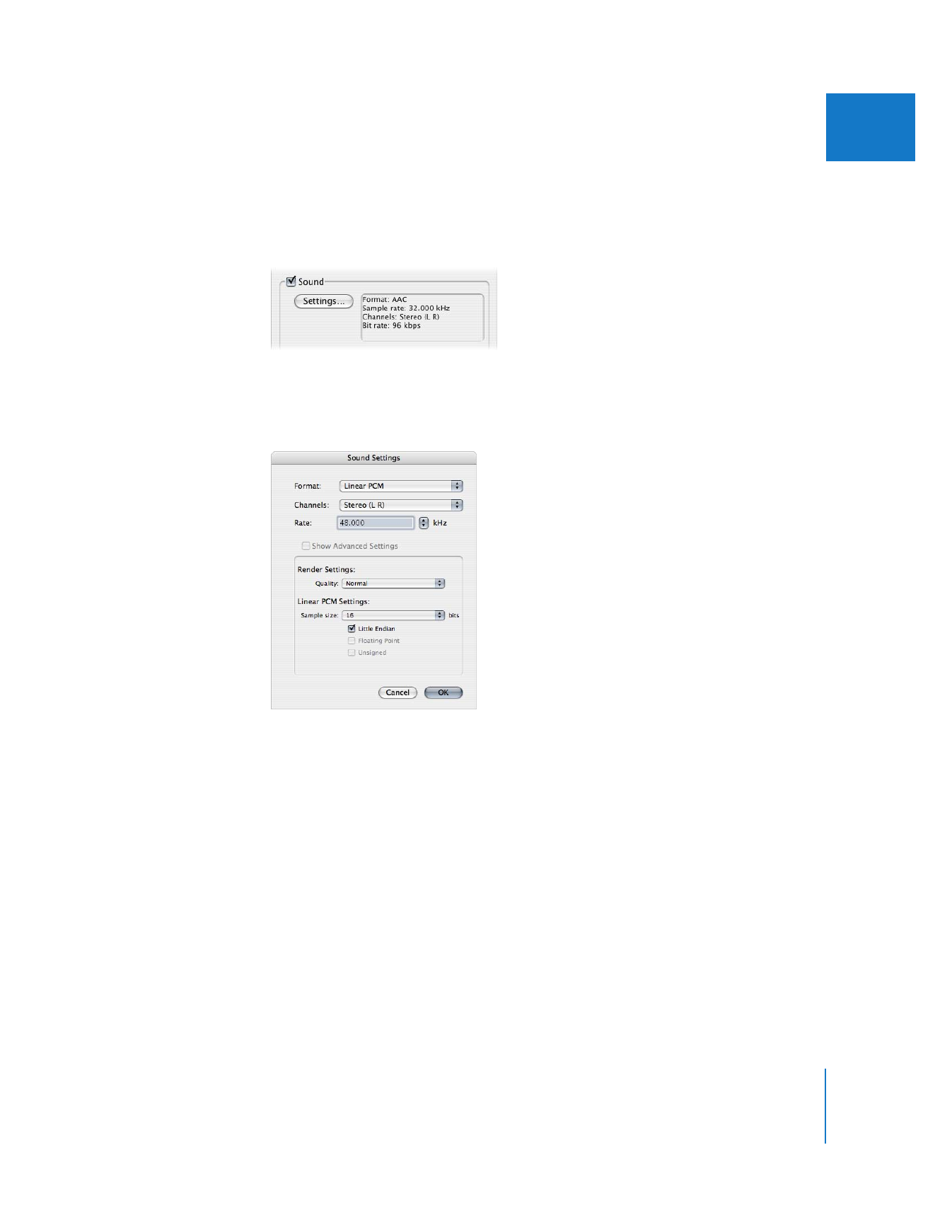
QuickTime Movie Sound Settings
Click Settings in the Sound area of the Movie Settings dialog to choose an audio format,
number of channels, sample rate, and additional settings. Depending on the format you
choose from the Format pop-up menu, additional settings may be available.
Important:
If there is no audio in your clip or sequence, deselect the Sound checkbox
in the Movie Settings dialog. Otherwise, blank audio tracks are created in your
QuickTime movie file, which require additional space.
 Format: To reduce file size and download bandwidth, choose a codec to compress
the audio tracks. If you’re outputting full-resolution audio, choose Linear PCM.
 Channels: Select Mono, Stereo (L R), or 2 Discrete Channels. If you’re delivering
material for the Internet, you may want to choose Mono because it cuts your audio
file size in half. Some formats support additional channel configurations.

258
Part III
Output
 Rate: Choose a standard sample rate from the pop-up menu or enter a value to
specify the output rate for the audio. Lower sample rates take less bandwidth but
have lower quality.
 8–22.225 kHz: These lower sample rates are used mainly for multimedia and web
movies to reduce file size.
 32 kHz: A lower-quality sample rate often used on consumer DV camcorders. This
option isn’t particularly useful for exporting unless you specifically need to make a
file that is compatible with a 32 kHz device.
 44.1 kHz: This is the sample rate of music CDs.
 48 kHz: Most digital video formats use this sample rate.
 96 kHz: This sample rate is common in professional audio and music production.
 192 kHz: This sample rate is typically used by high-end audio mastering facilities.
 Show Advanced Settings: Select this checkbox to set additional options, if the
selected audio format supports this.
 Render Settings—Quality: If your sequence or clip sample rate doesn’t match your
export sample rate, this pop-up menu appears. You can choose from several
quality options.
 Linear PCM Settings: These options are only available when you choose Linear PCM
from the Format pop-up menu.
 Sample size: Choose a bit depth for your audio samples. For most situations, 16-bit
audio is the minimum bit depth you should choose, but sometimes 8-bit audio is
useful when creating small, low-quality movies for the web. If you choose 32-bit,
you have the option of using integer or floating-point values. You can also choose
64-bit, but only if the Floating Point checkbox is selected.
 Little Endian: This refers to the way audio data bytes are ordered. Little endian byte
ordering is used when creating Windows-compatible WAVE files. Big endian order
is used when creating AIFF files.
 Floating Point: This option affects how the bits of each sample are used to
represent audio amplitudes. Floating point is available with 32-bit audio, and
required when using 64-bit audio.
 Unsigned: This option is automatically enabled when exporting 8-bit WAVE files.

Chapter 18
Exporting Using QuickTime Conversion
259
III